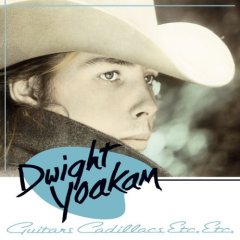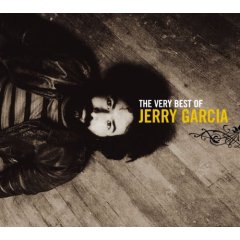
Written by Fantsama el Rey
Sounding better than ever, The Pretenders’ first album, simply titled Pretenders, has been remastered and re-released. Augmented with a second disk of B-sides, demos, and live tracks, it is still all killer, no filler. This American-fronted, British band’s first recording ranks as one of their best and puts them side by side with other classic rock debuts as The Doors and Led Zeppelin.
Everyone knows at least one Pretenders' tune; check out the singles collection to see what I mean. A few popular songs off of this album are self-penned dandies, “Kid” and “Brass In Pocket,” alongside Ray Davies’ “Stop Your Sobbing.” Then we have cult favorites that include the likes of “Precious” and “Tattooed Love Boys,” two in-your-face rockers with hard, raw attitude.
The album is divided into a rocking punkish part and a dreamy part, where guitar/vocalist Chrissie Hynde’s displays her softer side. The songs in this mode are the more popular or at least the more well known of the band, which is really too bad because the original line-up of Pete Farndon bass, James Honeyman-Scott guitars/keyboards, and Martin Chambers drums can rock with the best of them. Oh, don’t get me wrong; the singles do jump but the others tracks are fierce and have more drive to them. By the time of these recordings, guitarist Honeyman-Scott was heavily under the influence of rockabilly guitar hero Dave Edmunds, which adds to their sound.
Released in late 1979, Pretenders opens with “Precious,” and we hear how hard the band hits. The drums crash and the bass has a solid, driving pulse while the guitars swirl and soar around them. Hynde’s lyrics are delivered with force by her seething vocal attack, “Trapped in a world/ That they never made/ But not me baby/ I’m too precious/ I had to fuck off”. “The Phone Call” and “Tattooed Love Boys” keep the pace and the latter finds our heroine hangin’ with the shop boys and learning that when you shoot your mouth off with this crowd, they’ll show you “What that hole was for.”
“Stop Your Sobbing” begins the “dreamy side” of the album where Hynde’s vocals become smoother and more polished as she brings out her singing voice. The music still has a solid rock drive and loses none of its force just because it switches gears and downshifts a bit. The singles are pulled from this lot for obvious reasons and it does make the album as a whole more of a surprise upon first listen.
“Kid,” “Brass In Pocket,” and “Lovers” appear to be quaint tales of love. Yet these lyrics take on a new life when you take into consideration Hynde’s quote about the themes of her songs, “The usual stuff. A bit of prostitution, a little scamming, a hustle here and a hustle there…” Now, even if she is joking, you still get a different take on the songs. Armed with this new insight listen to “Brass In Pocket” again and tell me the song doesn’t change a bit. And not to be forgotten, the video game-inspired instrumental “Space Invader,” a catchy number with some nice sound effects from the time.
Disk two is all bonus materials and seems to have no specific order. According to the liner notes, there are two B-sides to “Brass In Pocket”: “Swinging London” and “Nervous But Shy”. Some B-sides are from singles that wouldn’t be released until almost two years later. “Cuban Slide” is the B-side to “Talk Of The Town,” and “Porcelain” was on the back of “Message Of Love.” These tunes wouldn’t emerge until the follow-up album, Pretenders II.
These sides show the influence that rock ‘n’ roll standards had on this band. “Cuban Slide” is dripping with the classic Bo Diddley beat with more Cuban flare. If I have to describe Diddley’s beat, then you should stop reading this and begin your Rock ‘n’ Roll 101 class… seriously. For those that know, you can hear some Arthur Lee and Love-inspired guitar work on “Porcelain;” think the epic “John Lee Hooker” also known as “Revelation.” While listening to “Nervous But Shy,” keep “Your Friend And Mine-Neal’s Song” in mind.
The demos and live tracks provide a good example of the band in their early days. The demos show that the band always had a pop sensibility to their sound. “Brass In Pocket” remains very much the same, except that in this version Hynde sings “Your special, so special” instead of the more powerful “I’m special, so special.” “Kid” rocks harder and is stil rougher around the edges, while “Stop Your Sobbing” has more of a pop/country vibe too it. Keeping the country vibe going is The Eagles-inspired “Tequila,” a slow drinking song, and with a title like that who would have figured?
The closing five tracks illustrate how The Pretenders cut loose with songs played live. They give off an easy going, R & B party atmosphere on “I Need Somebody,” while rockin’ into “Mystery Achievement;” both recorded for the BBC in ’79. On the tracks recorded in front of an audience, they kick down the doors and blow the roof off the joint. “Precious” and “Tattooed Love Boys” are punk fast and rockabilly infused. Here The Pretenders sound very much like a Los Angeles band you may have heard of, X. I find it interesting that both bands have a rockabilly-inspired guitarist, although X’s Billy Zoom is a rockabilly hero all his own now. Stomping disk two to an end is “Sabre Dance” in which we find Hynde doing her calm vocals a la “Sobbing” as Honeyman-Scott goes wild in front of her. Another fascinating live track and one hell of a way to end Pretenders disk two.
Well done and rocking from beginning to end, Pretenders is a must for any fan of the band and rock ‘n’ roll in general. It was and is a great loss that this line-up only got to do two albums before the death of guitarist James Honeyman-Scott and the departure of bass man Pete Farndon. The world is a bit emptier without solid rockers like them, but we have the music that they did record and thank the rock gods that X and Bo Diddley can still be found playing smaller venues.













